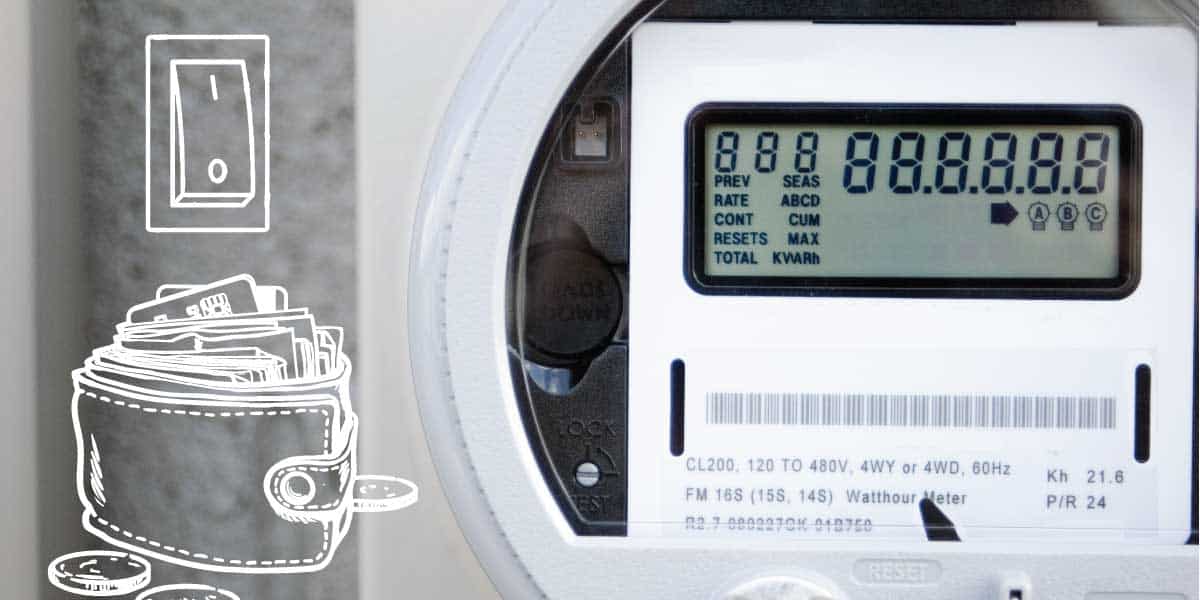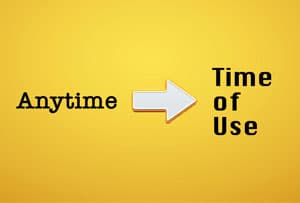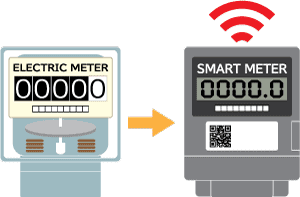Changing Tariffs Guide

Energy Saving Guide

How to change tariffs to save.
Switching tariffs isn’t an idea on most people’s radar when shopping for cheaper energy. It should be. That’s because changing tariffs can be a pathway to lower electricity bills. However, it isn’t always easy to understand what tariffs are available. Or whether you can actually switch to another tariff.
Tariff switching made easier
We’ll unpack the three main tariff types, how to see if switching might save you money, look at the rules that apply to switching tariffs, and share practical advice on how to change tariffs. It takes a lot of digging through documentation from the various electricity distribution networks (who define the available tariffs) to find out what’s even possible. So, we’ve also pulled together a summary of the rules around changing tariffs to help households in the major contestable electricity networks across Australia.
- Tariff types explained
- How to see if switching tariff type could save money
- Tariff switching rules you need to know
- How to change tariffs
- Smart meter upgrades
1. Tariff types explained
There are three types of electricity tariffs.



2. How to see if switching tariffs might save money
Switching to Anytime
You can quickly and accurately check to see if moving from Time of Use to a flat rate (aka Anytime tariff) could save money. If your household is currently on a Time of Use tariff, you can know with certainty if an Anytime switch is worth it! Start by running a comparison using a recent bill and using your actual time of use electricity consumption. Then add up the total energy use (Peak, Shoulder and Off Peak) and use this number to run a second comparison for Anytime plans. The cheapest plan wins!
Switching to Time of Use
If you are considering moving from an Anytime to Time of Use tariff, it’s a little trickier working out just how much you might (or might not) save. Particularly if you don’t have a smart meter. Without a smart meter, you won’t know how much energy you are using in each Time of Use period over the day (Peak/Shoulder/Off-Peak). So, the next best thing is to use the Time of Use split for an average household in your network. To see the Energy Regulator benchmark Time of Use usage split for average households in each network – go here. To calculate the potential cost of a Time of Use tariff – apply the period split to your total usage and run a comparison. You’ll get an indication of whether changing tariffs might be favourable or not. Before switching, it’s worth checking whether you can go back after you’ve made a move.

3. Electricity tariff rules
These rules include:
- the default tariff that is assigned when you have a new meter installed;
- what tariffs you can change to; and
- how often can you change the tariff (tip – it’s usually only once every 12 months).
| State | Network | Tariff Switching | Default tariff for new meter | Optional tariffs for new meter | Tariff change frequency | Source |
|---|---|---|---|---|---|---|
| ACT. | Evoenergy | Anytime tariffs (10, 20 & 30) are closed to new customers and cannot be switched to. Switching permitted between Time Of Use and Demand tariffs. Switching from Anytime to Time Of Use (or Demand tariffs permitted (likely requires smart meter upgrade). | Demand (25) | Time Of Use (15) | Only one tariff reassignment per 12 months is allowed. | Link |
| State | Network | Tariff Switching | Default tariff for new meter | Optional tariffs for new meter | Tariff change frequency | Source |
|---|---|---|---|---|---|---|
| NSW. | Ausgrid | Anytime tariffs (EA010) is closed to new customers and cannot be switched to. Switching permitted between Time Of Use and Demand tariffs. Switching from Anytime to Time Of Use (or Demand tariffs permitted (likely requires smart meter upgrade). | Demand (EA116) | Time Of Use (EA025) | Only one tariff reassignment per 12 months is allowed. | Link |
| NSW. | Endeavour Energy | Anytime tariff (N70) is closed to new customers and cannot be switched to. Switching permitted between Time Of Use and Demand tariffs. Switching from Anytime to Time Of Use (or Demand tariffs permitted (likely requires smart meter upgrade). | Demand (N73) | Time Of Use (N71) | Link | |
| NSW. | Essential Energy | Switching permitted between Anytime, Time Of Use and Demand tariffs subject to meter capability. | Time Of Use (BLNRSS2) | Demand (BLND1AR) | Only one tariff reassignment per 12 months is allowed. | Link |
| State | Network | Tariff Switching | Default tariff for new meter | Optional tariffs for new meter | Tariff change frequency | Source |
|---|---|---|---|---|---|---|
| QLD. | Energex | Anytime tariff (8400) and Time Of Use tariff (8900) are closed to new customers and cannot be switched to. Switching permitted from Time Of Use to Demand tariffs. Switching permitted from Demand tariffs to Time Of Use (6900). Switching from Anytime to Time Of Use (6900) or Demand tariffs permitted (likely requires smart meter upgrade). | Time Of Use (6900) (Applies for new meters installed since July 2025) | Demand (3900) | Only one tariff reassignment per 12 months is allowed. | Link |
| State | Network | Tariff Switching | Default tariff for new meter | Optional tariffs for new meter | Tariff change frequency | Source |
|---|---|---|---|---|---|---|
| SA. | SA Power | Anytime tariff (RSR) closed to new customers and cannot be switched to. Switching permitted between Time Of Use and Demand tariffs. Switching from Anytime to Time Of Use or Demand tariffs permitted (likely requires smart meter upgrade). | Time Of Use (RTOU) | Time Of Use Demand (RPRO) or Time Of Use Seasonal trial (RTOU+) | Only one tariff reassignment per 12 months is allowed. | Link |
| State | Network | Tariff Switching | Default tariff for new meter | Optional tariffs for new meter | Tariff change frequency | Source |
|---|---|---|---|---|---|---|
| VIC. | AusNet Services | Switching permitted between Anytime, Time Of Use and Demand tariffs with the exception of Electric Vehicle owners with charging equipment over 3.6kW output who cannot switch to an Anytime tariff. | Time Of Use (NAST11) | Anytime tariff (NEE11/NEE13)or Demand tariff (NASN11) | Only one tariff reassignment per 12 months is allowed. | |
| VIC. | Citipower | Switching permitted between Anytime, Time Of Use and Demand tariffs with the exception of Electric Vehicle owners with charging equipment over 3.6kW output who cannot switch to an Anytime tariff. | Time Of Use (CRTOU) | Anytime tariff (C1R/C1RCDS) or Demand tariff (CR) | Only one tariff reassignment per 12 months is allowed. | Link Link |
| VIC. | Jemena | Switching permitted between Anytime, Time Of Use and Demand tariffs with the exception of Electric Vehicle owners with charging equipment over 3.6kW output who cannot switch to an Anytime tariff. | Time Of Use (A120) | Anytime tariff (A100/A100A180)or Demand tariff (A10D) | Only one tariff reassignment per 12 months is allowed. | |
| VIC. | Powercor | Switching permitted between Anytime, Time Of Use and Demand tariffs with the exception of Electric Vehicle owners with charging equipment over 3.6kW output who cannot switch to an Anytime tariff. | Time Of Use (PRTOU) | Anytime tariff (D1) or Demand tariff (DD) | Only one tariff reassignment per 12 months is allowed. | |
| VIC. | United Energy | Switching permitted between Anytime, Time Of Use and Demand tariffs with the exception of Electric Vehicle owners with charging equipment over 3.6kW output who cannot switch to an Anytime tariff. | Time Of Use (URTOU) | Anytime tariff (LVS1R) or Demand tariff (RESKW1R) | Only one tariff reassignment per 12 months is allowed. |
| State | Network | Tariff Switching | Default tariff for new meter | Optional tariffs for new meter | Tariff change frequency | Source |
|---|---|---|---|---|---|---|
| TAS. | TasNetworks | Switching permitted between Anytime and Time Of Use tariffs subject to meter capability. | Time Of Use (93) | Anytime tariff (31) | Link |
Time Of Use and Demand tariffs are the default for new meters
The Australian Energy Regulator (AER) has been championing a move to cost-reflective tariffs. When households add solar or their old meter is replaced with a smart meter – a time of use and/or demand tariff is usually assigned. If priced correctly, Time Of Use and Demand tariffs can enable consumers to reduce their overall costs. Lower bills are achieved by limiting peak-priced power use and shifting to use cheaper off-peak electricity.
4. Here’s how to change tariffs
Contact your current retailer if you wish to switch tariffs. They will request the network operator to make the change and inform you when it’s completed. If that change requires a meter upgrade, your retailer will organise that for you, usually at no cost.
Switching tariff strategies
If you’re thinking of switching retailers and tariffs at the same time, there are two ways to go.
1. Switch retailer first. Then, when the transfer is complete, ask your new retailer to change to your preferred tariff (using the rules below to guide you). 2. Alternately, you can change tariff with your current retailer. After the tariff change has been completed, then make the retailer switch. Trying to sign up to a new retailer AND a new tariff type (not available to your current meter) upfront will be difficult. You’ll find that retailers online signup will only display plans with Tariff types available to your existing meter according to the rules of the network.Check you can get back
A final thing that’s important to note. In most networks, if your existing tariff is “closed to new customers”, and you change to another tariff, you will not be able to switch back to your old tariff.5. Smart Meter upgrades
To switch to a Time Of Use or Demand Tariff, you’ll need a smart meter to record when electricity is used. Outside Victoria, only ~20% of properties have a smart meter installed, so chances are you may require an upgrade to a smart meter. Your retailer can organise a new smart meter, usually at no cost. Once installed, these meters will support remote meter reading (usually sent once per day via a 3G/4G connection) and more granular meter data. For households, this means no more meter readers on your property. And the end to estimated bills.
Many retailers offer much better visibility of your usage – at least half-hourly usage and solar export data in your retailer’s app/website. By having easy access to your energy use, you can see where to make adjustments to further lower energy bills.


Why smart meters matter
We’re big fans of smart meters and Time Of Use tariffs. They help households understand when they’re importing and exporting energy. Time of Use tariffs unlock off-peak hours with lower network charges and lower retail rates. Off-peak hours are now expanding! Networks are beginning to add off-peak hours around midday when there are high levels of low-cost renewables in the grid (find out more in our our solar sponge tariff article). This is set to grow, offering more households an excellent opportunity to buy cheap, low emissions power from the grid.
Households can take control, empowered with information about energy use coupled with access to affordable daytime off-peak rates. There are many benefits from shifting energy use. This starts with lower electricity bills. At the same time, it can support using more renewable energy while taking pressure off the network in peak periods.
Time Of Use and Demand Tariffs – rates and hours
To find out more about time of use and demand tariffs, you can:










